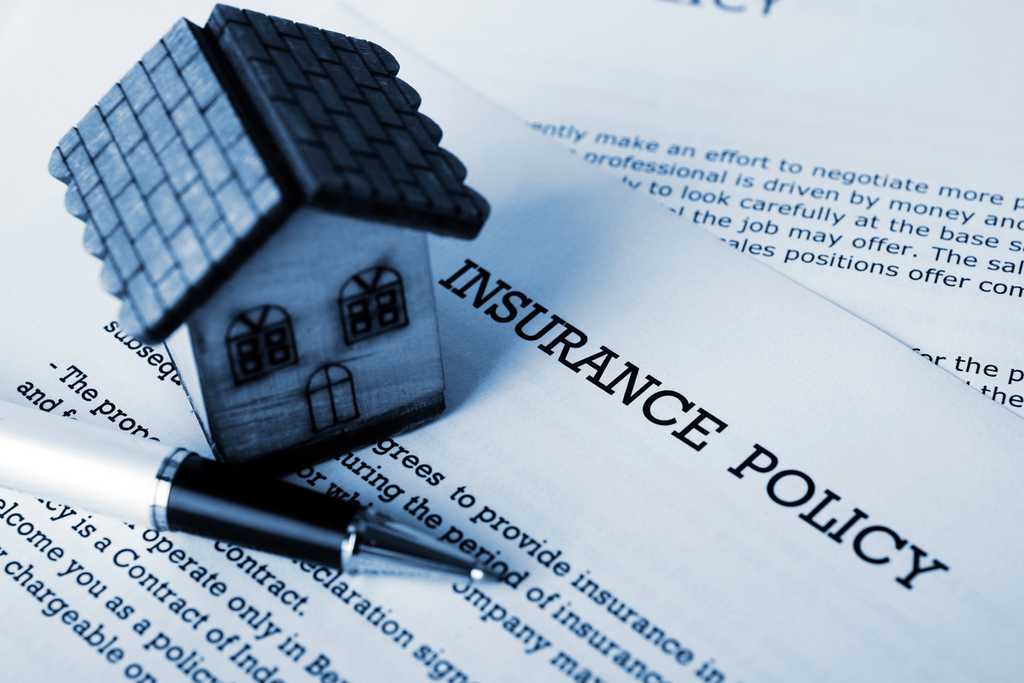An HO-3 policy is the most common type of homeowners insurance available. Sometimes referred to as a homeowners policy special form, an HO-3 policy protects you financially if your single-family home or personal items are damaged or destroyed. It also provides coverage if you need to find other living arrangements while your home is being repaired, or if you're liable for another's injury or property damage.
What does HO-3 mean?
The term “HO-3” is part of a labeling system used by the insurance industry to denote different types of homeowners insurance policy contracts. HO-1, HO-2, HO-3, and HO-5 are for single-family homes (more about the differences between these contracts in a bit), while HO-4 is for renters, and HO-6 is for condominium owners.
An organization called the Insurance Services Office (ISO) provides standardized versions of these contracts. While some insurance companies adopt these standardized contracts word for word, others modify them based on the needs of their business. This article will describe what you can typically expect when you buy an HO-3 homeowners insurance policy. However, be sure to check with your insurance company or agent to understand better what your policy does and doesn’t include.
What an HO-3 homeowners insurance policy covers
An HO-3 homeowners insurance policy typically consists of six types of coverage for a single-family home. You may see these labeled with letters A through F.
Coverage A: Dwelling
Coverage A is the foundation of your homeowners policy. It pays to repair or replace your home if it’s damaged or destroyed by an event such as fire or wind. This coverage has a limit, or a maximum amount the insurance company will pay in the event of a claim. You choose the coverage A limit when you buy the policy; it's typically based on an estimate of the cost to rebuild the home.
Coverage B: Other structures
Coverage B pays to repair or replace structures on the property other than the dwelling. These may include a detached garage, fence, or swimming pool. The limit for coverage B is usually a percentage of the coverage A limit. So if your coverage A limit is $300,000, and the coverage B limit is 10% of that, then your insurer would pay up to $30,000 to repair or replace your other structures.
Important: An HO-3 policy provides coverage for the dwelling and other structures on an “open perils” basis. This means it promises to provide coverage for destruction or damage due to any event unless it's expressly excluded in the policy contract. Standard exclusions include damage due to homeowner neglect; mold, fungus, or wet rot; or damage caused by birds, rodents, or insects.
Coverage C: Personal property
Coverage C pays to repair or replace damaged items such as clothing, furniture, appliances, electronics, and other property. The limit for coverage C is typically 50% of your coverage A limit. However, certain items may have a smaller sub-limit. For example, the insurance company may provide only $1,500 of coverage for jewelry, $2,500 for firearms, and $5,000 for electronics. Sub-limits minimize the insurer's risk. The good news is that if you need higher limits for specific items (a jewelry collection, for instance), you can usually buy additional coverage to provide that protection.
Coverage C is provided on a “named perils" basis. This means the insurance company promises coverage only if the damage is caused by an event listed in the policy contract. The standard list of named perils includes 16 such events.
Named perils
- Fire or lightning
- Windstorm or hail
- Explosion
- Riots
- Aircraft
- Vehicles
- Smoke
- Vandalism
- Theft
- Falling objects
- Freezing
- Weight of ice, snow, or sleet
- Sudden and accidental tearing, cracking, burning, or bulging
- Sudden and accidental damage due to short circuiting
- Volcanic Eruption
- Accidental discharge or overflow of water or steam
Coverage D: Loss of use
If you can’t live in your home due to damage from a covered peril, coverage D helps pay for your living expenses. These expenses might include hotel or home rental costs, restaurant meals, or laundry services. The typical coverage D limit is 10% of the coverage A limit.
Note: Some insurance companies refer to Coverage D as additional living expense coverage.
Coverage E: Personal liability
Coverage E provides reimbursement if you’re held liable for someone’s injury or property damage. It covers incidents both on and off your property. The typical limit is 10% of your coverage A limit.
Coverage F: Medical payments
Coverage F provides limited reimbursement for the cost of routine medical bills if people are hurt on your property, including by your pets. You choose the limit when you buy the policy (it’s typically not a percentage of the coverage A limit), and it’s usually no more than a few thousand dollars.
HO-3 versus HO-2 and other HO policy types
Whereas an HO-3 policy contract is the most common type of homeowners insurance for single-family dwellings, other types do exist.
- HO-1 — This is also known as the “basic form.” As the label implies, it’s the most basic type of homeowners insurance. While an HO1 policy typically includes the six coverages listed above, the dwelling coverage is offered only as named perils (unlike an HO-3, which is offered as open perils). These perils include fire, smoke, windstorm, hail, lightning, explosion, vehicles (striking the property), civil unrest, theft, and vandalism.
- HO-2 — This is also known as the “broad form.” Similar to an HO-1 policy, an HO-2 policy offers dwelling coverage only as named perils. However, in addition to the perils named in an HO-1 policy, an HO-2 policy will also provide coverage for trees and falling objects, damage due to the weight of ice snow or sleet, and water damage caused by an accidental rupture of the home’s plumbing HVAC, sprinkler system, or household appliance.
- HO-5 — An HO-5 policy offers the same coverages as an HO-3 but with more expanded personal property coverage. An HO-5 policy provides its personal property coverage on an open perils basis. It typically also includes reimbursement for personal property based on the replacement cost of an item. This means you'd receive enough money to buy a brand-new item to replace the one that has been damaged or destroyed. (An HO-3 personal property reimbursement, on the other hand, is based on the depreciated, actual cash value of the item). HO-5 policies are intended for people who want the maximum amount of financial protection.
Here’s a breakdown of the differences in these policy contract types:
| HO-1 | HO-2 | HO-3 | HO-5 | |||||
|---|---|---|---|---|---|---|---|---|
Dwelling / Other Structures | (Coverage A and B) | Named perils (limited) | Named perils | Open perils | Open perils | |||
Personal Property | (Coverage C) | Named perils, | actual cash value | Named perils, | actual cash value | Named perils, actual cash value | Open perils, | replacement cost |
Why get an HO-3 policy?
If you have a mortgage, your lender most likely requires you to have homeowners insurance. Beyond that, homeowners insurance provides essential peace of mind when it comes to protecting what is probably the most important investment you'll ever make. It also provides coverage for less significant (though potentially costly) situations on and off your property, such as theft and liability.
Nearly 80% of homeowners policies are HO-3, according to 2018 data from the National Association of Insurance Commissioners (NAIC). Relatively few HO-1 are sold; in fact, these are prohibited by some states due to their limited coverage. HO-2 and HO-5 make up 6% and 13% of homeowners policies sold, respectively.
The bottom line is that if you're like the vast majority of homeowners, you'll opt for an HO-3 policy. An insurance agent can help you better understand your options and assist you in making a choice that works best for you.

